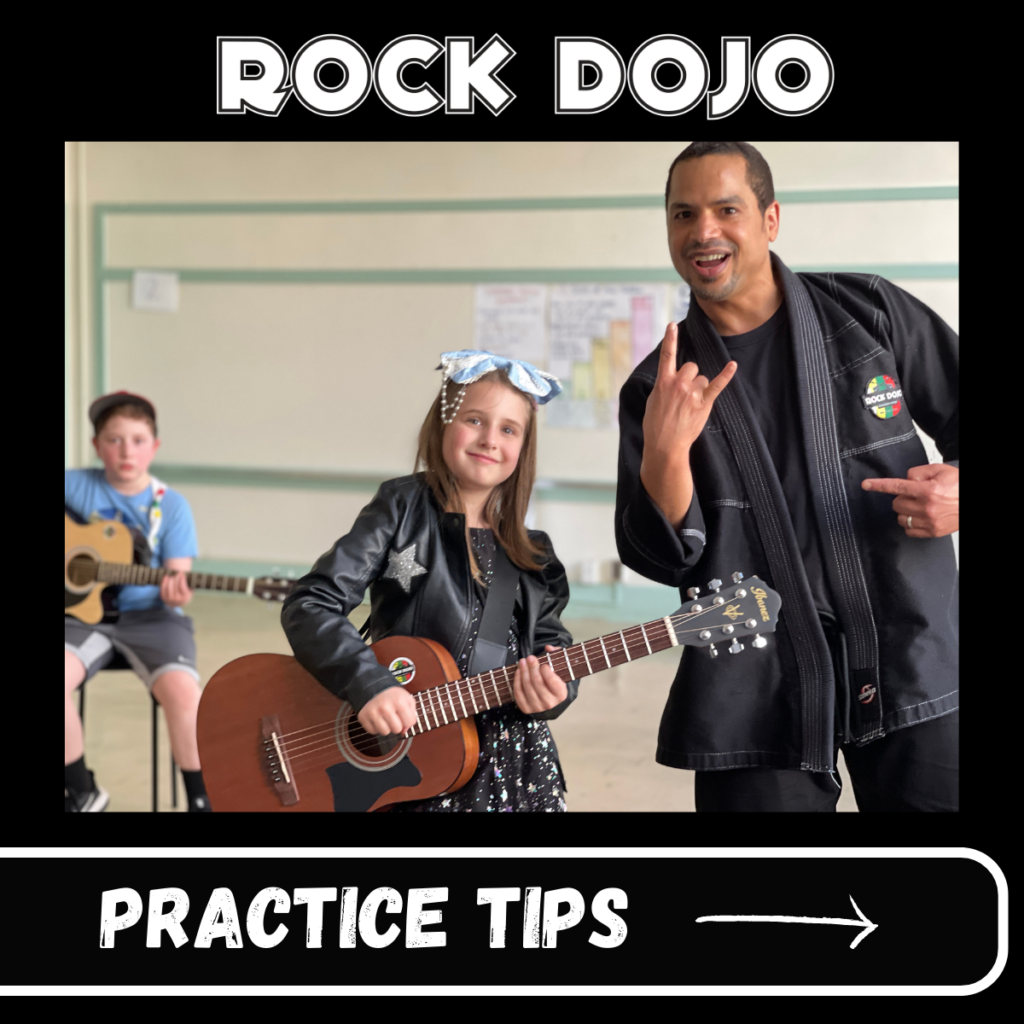
It’s no secret that practicing any instrument requires dedication, discipline, and repetition. Maintaining their interest and motivation can sometimes be challenging for young learners. That’s why making practice fun and engaging is crucial to helping kids develop a lifelong love for playing the guitar. This blog post will explore six engaging guitar practice techniques to keep your child excited about learning the guitar and mastering their skills.
Guitar Practice Techniques #1: Gamify the Practice Session
Turn practice into a game! Create challenges and competitions for your child to complete during their practice sessions. This could include setting a timer and having them play a song or exercise as often as possible within a specific time frame or challenging them to reach a certain number of correct notes in a row. Reward their achievements with small prizes, praise, or extra privileges, and watch their motivation soar!
Guitar Practice Techniques #2: Incorporate Their Favorite Songs
Allow your child to choose some of their favorite songs to learn and practice. This will help them stay interested and excited about playing the guitar. Plus, it gives them a sense of accomplishment and pride when they can play a song they love. You can find simplified versions or tabs of popular songs online or work with your child to figure out the chords and melody by ear.
Guitar Practice Techniques #3: Use Visual Aids and Props
Incorporate visual aids like color-coded fretboard diagrams, flashcards, or stickers to make learning more interactive and engaging. These visual tools can help break down complex concepts and make practice more enjoyable. Props like a metronome, capo, or slide can add variety to your child’s routine and help them explore new techniques.
Guitar Practice Techniques #4: Encourage Composition and Creativity
Encourage your child to create their melodies, riffs, or songs. This sparks creativity and helps develop a deeper understanding of the guitar and music theory. You can start by having them create a simple melody or chord progression and then build upon it over time. This will also give them a sense of ownership and pride in their music.
Guitar Practice Techniques #5: Practice with a Buddy or Group
Practicing with a friend or joining a group guitar lesson can make practice more enjoyable and social. Kids can learn from each other, share ideas, and collaborate on songs. Plus, it adds an element of friendly competition, motivating them to improve their skills and keep up with their peers.
Guitar Practice Techniques #6: Break-Up Practice Sessions
Instead of having one long practice session, break it into smaller, more manageable chunks throughout the day or week. This can prevent burnout and keep your child engaged in their practice. You can also vary the focus of each session, such as dedicating one session to scales, another to chords, and another to learn a new song.
BONUS Tip: Use Rock Dojo’s Complete Series of Online Guitar Courses
Rock Dojo’s Complete Series offers engaging, self-paced online guitar lessons for kids aged 6-12. The martial arts-inspired belt system keeps kids motivated and eager to learn.
Sample Lesson: Parts of the Guitar
In this video lesson from the Rock Dojo white belt series, students learn the parts of the guitar. Onscreen graphics and illustrations make mastering the parts of the guitar an essential and enjoyable first step in learning how to rock!
Sign up for Rock Dojo’s Guitar Lessons Today
Unlock a world of guitar-playing skills and endless possibilities with the Rock Dojo Complete Series, offering our award-winning curriculum at just $249. That’s equivalent to 40 private guitar lessons and a savings of nearly $2,400 in private lesson fees! Give your child the gift of music, self-esteem, and self-discipline, all while mastering the art of rocking the guitar. Sign up now and let your child shine with the Rock Dojo Complete Series! Contact us on Facebook or Instagram if you have any questions.


